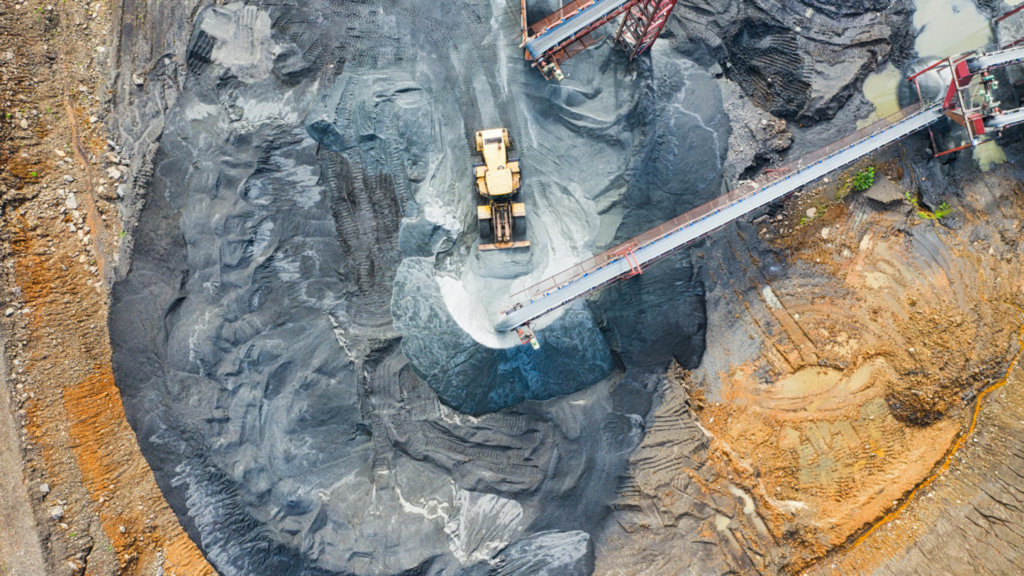China’s Economic Slowdown and Geopolitical Risks: Implications for Foreign Investors
China’s economy, once a global growth engine, has faced significant headwinds in recent years. While China are still the top global manufacturer, leading exports of many goods, investing heavily in high-tech sectors, and innovating rapidly – with DeepSeek being just the latest example – their economy has substantially slowed (RAND, 2025). The local governments are straining under debt burdens, the property sector has nearly collapsed, consumer confidence is poor, external demand is a brittle support beam as Western governments consider protectionist measures, and China’s GDP is no longer catching up to that of the United States (RAND, 2025).
As 2025 unfolds, investors are reassessing their strategies amid rising geopolitical uncertainties and China’s evolving economic policies. This article explores the factors behind China’s economic slowdown, the impact of regulatory shifts, and how foreign investors are adapting to the new realities.
China’s Economic Slowdown
China’s economic slowdown has deepened, with GDP growth projected to hover around 4.5% in 2025 (IMF, 2025), significantly lower than the double-digit growth seen in previous decades, as shown in Figure 1. As touched upon, numerous factors are contributing to this downturn:
Figure 1. – China’s real GDP Growth (%).
- The real estate crisis continues to weigh on the economy, with the fallout from Evergrande, Country Garden, and other major developers leading to prolonged distress in the property sector (Hedgepoint Global Markets, 2024), accounting for as much as 20% of China’s economic activity (IMF, 2024).
- Weak consumer demand remains a concern despite government stimulus measures (New York Times, 2025).
- Manufacturing and exports have also been affected, as global demand for Chinese goods has softened, particularly from Western markets imposing stricter trade restrictions (AP News, 2025a).
- Additionally, an aging population is exacerbating long-term economic concerns, as demographic shifts strain China’s workforce and reduce overall productivity (BBC News, 2024).
Geopolitical Risks and U.S.-China Tensions
Tensions between the U.S. and China also remain a central risk factor for foreign investors in 2025. Trade barriers continue to shape economic relations, with the U.S. maintaining tariffs on Chinese goods and both countries imposing new restrictions on key industries such as technology (AP News, 2025b). The push for self-sufficiency in critical technologies has driven China to decouple from Western supply chains (Fusion Worldwide, 2024), while multinational corporations look to diversify their operations (World Economic Forum, 2025).
Geopolitical risks have also intensified due to increased military activities in the Taiwan Strait, contributing to market volatility (Straits Times, 2025). Meanwhile, regulatory crackdowns on foreign firms operating within China have raised concerns about compliance risks and unpredictability, discouraging some businesses from expanding within the Chinese market (Fortune, 2024).
The Changing Landscape for Foreign Investment
Foreign direct investment (FDI) in China declined sharply in 2024 and continues to struggle in 2025. Investor confidence has been eroded by the unpredictable regulatory environment, as crackdowns on sectors such as tech, education, and finance have created uncertainty for foreign businesses (CNN, 2025). As a result, multinational corporations may increasingly favour investments in alternative nations, where geopolitical risks are perceived to be lower.
To counter this, Beijing has introduced incentives such as relaxed foreign ownership restrictions in specific sectors like pharmaceuticals and telecommunications to attract foreign capital (China Briefing, 2025). However, the growing dominance of state-owned enterprises (SOEs) in key industries has further limited opportunities for privately-owned enterprises (POEs) and foreign businesses, making market entry and expansion more challenging (Huang et al., 2025:705-706).
Sectors with Investment Potential
Despite economic headwinds, numerous sectors in China still offer investment opportunities:
- Renewable energy remains a promising area, as China continues to be the global leader in solar, wind, and battery technology, with strong government support for sustainability initiatives (Time, 2025).
- High-tech manufacturing is another attractive sector, with Beijing investing heavily in domestic semiconductor production, AI, and quantum computing, creating selective opportunities for foreign partnerships (China Daily, 2025).
- China’s healthcare and biotech industries are also expected to grow in an attempt to leverage investments and trade to the rising demand in Southeast Asia for affordable biopharmaceutical products, as well as to reduce costs and enhance its geostrategic and technological influence (Carnegie Endowment for International Peace, 2025).
China’s economic slowdown and geopolitical challenges in 2025 are reshaping the investment landscape. While regulatory unpredictability and U.S.-China tensions pose significant risks, opportunities remain in strategic sectors such as green energy and high-tech industries. Foreign investors must navigate these challenges carefully, balancing risk with the potential rewards of investing in the world’s second-largest economy. Moving forward, a well-diversified approach and adaptability will be crucial for those looking to maintain a presence in China.
Bibliography
AP News. (2025a). “China’s exports and imports weaken in Jan-Feb as demand slides amid global trade uncertainty”. AP News. Published 7th March, 2025. Available at: China’s exports and imports weaken in Jan-Feb as demand slides amid global trade uncertainty | AP News
AP News. (2025b). “Fast fashion, laptops and toys are likely to cost more due to US tariffs on Chinese imports”. AP News. Published 5th February, 2025. Available at: Trump tariffs on China take effect. Here’s what may cost more in the US | AP News
BBC News. (2024). “China’s ageing population: A demographic crisis is unfolding for Xi”. BBC News. Published 2nd April, 2024. Available at: China’s ageing population: A demographic crisis is unfolding for Xi – BBC News
Carnegie Endowment for International Peace. (2025). “Biopharmaceuticals Rising: China’s Strategic Pivot to Southeast Asia Amid Great Power Tech Competition”. Carnegie Endowment for International Peace. Published 23rd January, 2025. Available at: Biopharmaceuticals Rising: China’s Strategic Pivot to Southeast Asia Amid Great Power Tech Competition | Carnegie Endowment for International Peace
China Briefing. (2025). “Beijing New Market Access Updates: Opportunities for Foreign Businesses and Investors”. China Briefing. Published 29th January, 2025. Available at: Beijing New Market Access Updates: Opportunities for Foreign Investors
China Daily. (2025). “High-tech sectors to attract more FDI”. China Daily. Published 17th January, 2025. Available at: High-tech sectors to attract more FDI – Chinadaily.com.cn
CNN. (2025). “China’s foreign investment sank in January. Can Beijing turn things around?”. CNN. Published 20th February, 2025. Available at: FDI in China sank in January. Can Beijing turn things around? | CNN Business
Fortune. (2024). “China’s uncertainty and ‘draconian regulations’ have drastically raised risks for foreign businesses in the country, European business group says”. Fortune. Published 20th March, 2024. Available at: China’s uncertainty and ‘draconian regulations’ have drastically raised risks for foreign businesses in the country, European business group says | Fortune Asia
Fusion Worldwide. (2024). “China’s Push for Technological Self-Sufficiency”. Fusion Worldwide. Published 28th October, 2024. Available at: China’s Push for Technological Self-Sufficiency
Hedgepoint Global Markets, 2024. “China’s real estate crisis: impacts and measures”. Hedgepoint Global Markets. Published 14th October, 2024. Available at: China’s real estate crisis: impacts and measures – Hedgepoint Global Markets
Huang, K, G., Jing, R., Xia, J., Zhang, C, M., Zhong. and Zhu, D, H. (2025). “Coevolution of SOEs and the Chinese Economy: The Roles of SOE Heterogeneity from the Institutional, Strategic, and Organizational Perspectives”. Management and Organisation Review, Vol.20, Iss.5, pp.704-715. Available at: Coevolution of SOEs and the Chinese Economy: The Roles of SOE Heterogeneity from the Institutional, Strategic, and Organizational Perspectives | Management and Organization Review | Cambridge Core
IMF. (2024). “China’s Real Estate Sector: Managing the Medium-Term Slowdown”. IMF. Published 2nd February, 2024. Available at: China’s Real Estate Sector: Managing the Medium-Term Slowdown
IMF. (2025). “Global Growth: Divergent and Uncertain”. IMF. Published January, 2025. Available at: World Economic Outlook Update, January 2025: Global Growth: Divergent and Uncertain
New York Times. (2025). “Facing Trump Tariffs, China Outlines Plan to Bolster the Economy”. New York Times. Published 16th March, 2025. Available at: China Outlines Plan to Bolster Consumption in Face of Trump Tariffs – The New York Times
RAND. (2025). “Focus on the New Economy, Not the Old: Why China’s Economic Slowdown Understates Gains”. RAND. Published 18th February, 2025. Available at: Focus on the New Economy, Not the Old: Why China’s Economic Slowdown Understates Gains | RAND
Straits Times. (2025). “War, geoeconomic confrontation pose biggest risks to the globe in 2025: WEF survey”. Straits Times. Published 16th January, 2025. Available at: War, geoeconomic confrontation pose biggest risks to the globe in 2025: WEF survey | The Straits Times
Time. (2025). “The World’s Biggest Polluter, China, Is Ramping Up Renewables”. Time. Published 7th March, 2025. Available at: How China Is Boosting Its Clean Energy Goals | TIME
World Economic Forum. (2025). “Why businesses need ‘geopolitical muscle’ in a multipolar world”. World Economic Forum. Published 14th January, 2025. Available at: Businesses need ‘geopolitical muscle’ in a multipolar world | World Economic Forum



